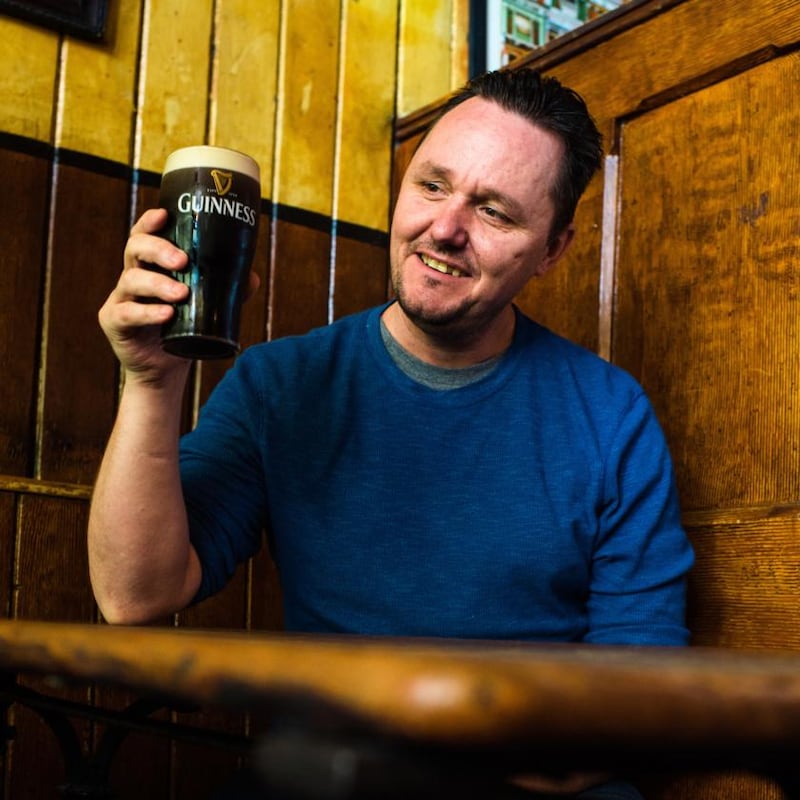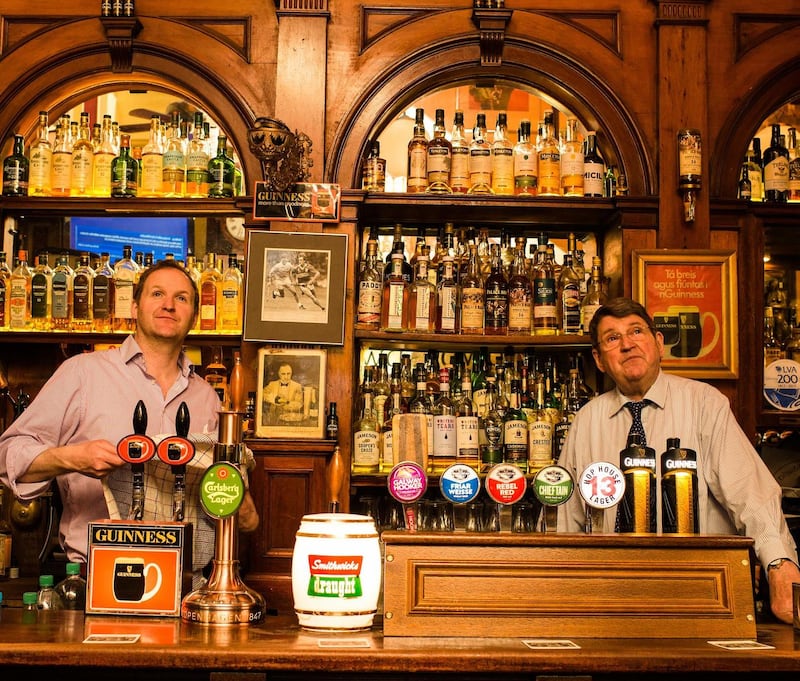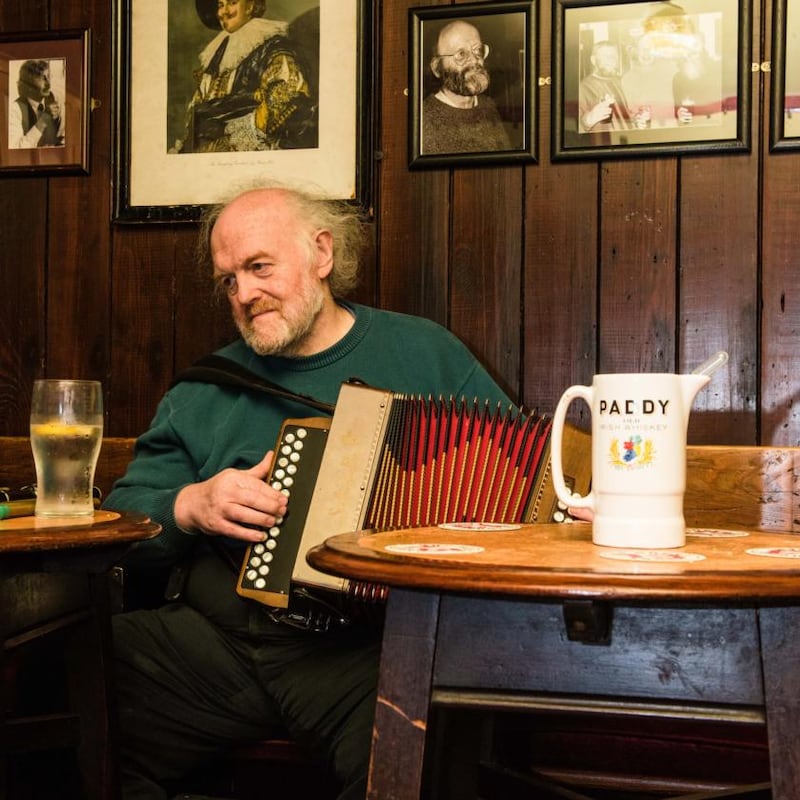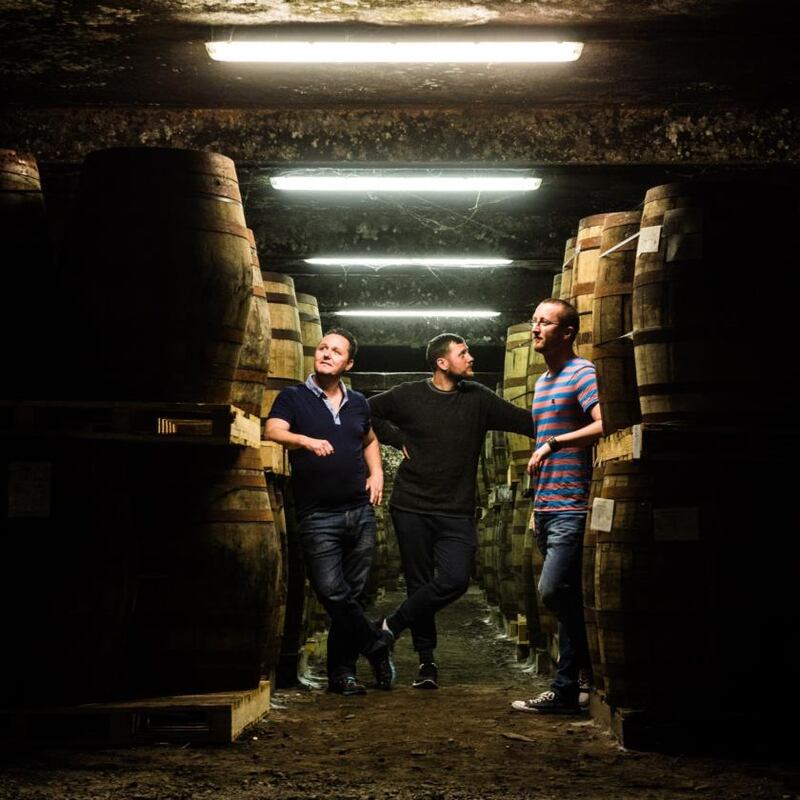"We're going to Ireland! What are the must-see places?"
“What’s the best pub?”
“Who’s got the best selection of whiskeys?”

“Are there distilleries we can visit?”
“We’d love to find a traditional Irish music session. Any recommendations?”
“Do Irish pubs really sell nails and lightbulbs along with pints?”
In our bar, the Dead Rabbit in Lower Manhattan, we get asked questions like this all the time. Of course, we always do our best to answer them. But when we started to look for books to recommend that addressed these diverse queries, we found lots of specialist titles, but none that covered the lot.
There was only one thing for it. We were going to have write our own.
Like me, Jack McGarry, my business partner and co-founder of the Dead Rabbit, is from Belfast. We like to think we know a fair amount about Irish pubs. Over the years we’ve worked in quite a few, and sampled plenty more throughout Ireland, in the North and South. We always had strong ideas about what makes not just a good pub, but a great one. It’s a real passion of ours.

We’re also obsessed with Irish whiskey. We reckon our bar (named the Best Bar in the World in 2016) holds the largest collection in North America, which is saying something.
We also know that the Irish whiskey sector is on fire right now. It’s the fast-growing spirit category in the world. Five years ago there were only seven distilleries in Ireland. Today there are 23, and within the next few years there’ll be more than 30 in operation.
Whiskey tourism is also taking off, attracting connoisseurs and enthusiasts from every continent, eager to discover the extraordinary story of uisce beatha.
As we began to discuss our plan for a guide to Ireland’s distilleries and best pubs, it became clear that we needed to embark on an extensive fact-gathering trip... and also that we needed some help. For an up-to-the-minute perspective on Irish distilling, we turned to our friend, Tim Herlihy.
Originally from Co Louth, Tim is based in the States now and works as a whiskey ambassador for Tullamore. (Yes, it’s a real job.) He trained at John Teeling’s Cooley distillery, just outside Dundalk, and has studied every aspect of whiskeymaking, not just in Ireland but in Scotland, Canada, Japan and the US. Today, he lectures from coast to coast on the history of the pure drop.
We got to meet some extraordinary characters, discovered amazing hidden places, heard story after story, and were even told a secret or two
As it turned out, we needed to take two fact-gathering trips. For the first, we drove the length of Ireland, and for the second, the breadth. It took about two months all told, covering about 6,500km. We visited 111 pubs – some of them twice – and every working distillery on the island, interviewing the owners, taking lots of photographs, and more importantly, sampling the hospitality (all in the name of editorial accuracy, you understand). What’s more, we did it in Poppy, a restored VW bus. Jack’s father, Jack McGarry snr, did the driving.
At the Dead Rabbit we’re fortunate to have a large and enthusiastic online following, particularly in Ireland. So, we decided to make the trips something of an event as well. We used social media to let people know where we’d be from day to day, and invite them to come along, see Poppy and say hello. We also got lots of useful local recommendations that way too.
Although we’d planned the trips as well as we could, there were all sorts of unexpected twists and turns on the way. For example, we had to seek refuge in De Barra’s of Clonakilty from Hurricane Ophelia – which, as everyone remembers, was the worst storm to hit Ireland in 60 years. We got to meet some extraordinary characters, discovered amazing hidden places, heard story after story, and were even told a secret or two. And though we’re all from Ireland, we also found out a lot about our own country as well.
We visited the great Dublin literary pubs like the Palace Bar, McDaid’s and Mulligan’s, where the ashes of one customer, a Texan called Billy Brooks Carr, are interred within the big grandfather clock. Then there’s Kavanagh’s – aka the Gravediggers – where a pint is often bought and placed on Brendan Behan’s grave, next door in Glasnevin Cemetery. In fact, Behan’s name (“drank here”, “was barred here”) cropped up in many of the stories of the capital city’s great pubs.


We also stopped into the great musical pubs like O’Donoghue’s, where the Dubliners formed back in the 1960s and you’re almost guaranteed to find a session, destination pubs like Johnnie Fox’s, and timeless beauties like the Long Hall, where nothing seems to have changed since the 19th century.
Of course, when visiting the pubs, we weren’t just interested in the architecture and the story of the place; we also wanted to know where the best pint of Guinness was to be found. It’s a very sensitive subject, and we found several contenders for the crown. As one modest publican said, “You may find as good, but you’ll not find better.” (If we were pushed on our favourites though, we’d say The Gravediggers. Or Sean’s Bar in Athlone.)
Many of the pubs we visited are named after people who own or once owned them. Like O’Lochlainn’s Bar in Ballyvaughan in Co Clare, which has been in the family for six generations. Margaret’s greeting to strangers and friends alike is “Ah, there you are,” and it was astonishing to find out in this tiny bar in a tiny village on the edge of the Burren, you will find a collection of more than 500 whiskeys, 72 of which are for sale.
But some of the pub names hint at something else entirely, like Shoot the Crows in Sligo town. Crows were a pest to farmers and once upon a time, there was a bounty on them. The enterprising owner of the pub accepted the (dead) crows in lieu of payment for drink, which he duly gathered up, put on his bike and wobbled off to the payment office in order to claim his reward.

And then there’s Jim o’the Mill outside Thurles in Co Tipperary – which The Irish Times called the best in the land in 2015. Many pubs have been called the best in Ireland. But late into the night, with Friday morning peeping around the corner, when you’re eating Kaye’s hot, freshly made wheaten bread with salty local butter, when the music feels like it’s about to lift the roof and take you with it, you’ll think to yourself: this might just be the one. It only opens one day a week, Thursday. Go if you possibly can.
The Liberties in Dublin was once the beating heart of Irish whiskey-making. Today, it’s home again to a booming industry, with new distilleries popping up like Teeling, the Dublin Liberties Distillery, and Pearse Lyons, which is located in the old, long-deconsecrated St James’s Church, with beautiful stained-glass windows now depicting the story of Irish whiskey.
Beyond Dublin, there are interesting things happening in the whiskey industry in all four provinces. The traditional big names – Midleton, Jameson, Tullamore, Bushmills and the oldest of the lot, Kilbeggan – continue to thrive. But much smaller, independent producers are really pushing the envelope; in Waterford Distillery, they have a sign that reads "Where barley is king, provenance is all"; they distil only one farmer's barley at a time – akin to what winemakers call terroir.
Louise McGuane of Chapel Gate Whiskey in Kilrush , Co Clare, is bringing back the almost forgotten art of whiskey bonding, whereby local traders would bring their own barrels to the distiller, fill them, and bring the whiskey back home to their farm or pub, to mature, blend or dilute it from cask strength for bottling. When bonding was the norm, the flavour of the whiskey was always local, specific to the place where it matured.

Right now, Irish whiskey is at its most exciting stage for many generations. There’s innovation and experimentation – with mashbills, casking, maturation, blending and so on – but we also found great respect, even reverence, for tradition. As an industry, its best days are still ahead, with the great old names finding new fans, and new ones that are changing the way we think about the old ways.
Irish hospitality, particularly the welcome you get in an Irish pub, is such an important part of our culture and our heritage. We wanted to document it and celebrate it while there’s still time. Because times are changing, and, frankly, some of these great places many not be around forever.
Accompanying the three of us (and Jack snr), we had Rebekkah Dooley, our marketing guru, co-ordinating all the pub and distillery visits and interviews, and the brilliant Belfast photographer Elaine Hill who shot the entire the project. We recorded hundreds of hours of conversations and sent them along with Elaine’s photographs to Conor Kelly in Belfast, who researched and wrote the text.
After all the slog of the travelling and gathering the material together, the hardest part was deciding what went in and what didn’t.
This book was a labour of love, written with humour and a lightness of touch. If you’re a serious Irish whiskey connoisseur, you’ll find plenty to interest you. But if you don’t know much about the hard stuff, we’ve included information on its history and how it’s made. If you’re a devotee of great pubs, you’ll be spoiled for choice. And if you love a good cocktail, Jack McGarry created 12 original recipes for the book using whiskeys from some of the distilleries featured.
Oh, and that pub where you can still call in for a pint and pick up a box nails and a lightbulb or your way out? That’s O’Shea’s in Borris, Co Carlow. Like many of the great rural bars, it began life as a spirit grocer, selling a bit of everything. It still does. Sláinte!
From Barley to Blarney: A Whiskey Lover’s Guide to Ireland, by Sean Muldoon, Jack McGarry, Tim Herlihy and Conor Kelly, is published by Andrews McMeel
OUR FAVOURITE COCKTAIL: SHORT AND SWEET

The short and sweet is a twist on the classic Bajan corn’n’oil cocktail. In the original, the dark rum floats on top of the whiskey (the “corn”), like a glistening slick of oil. Our version showcases the distinctive aromatic quality of the rum-casked whiskey, as well as its heavier alcohol content.
Ingredients
3 dashes Angostura bitters
1tsp cane syrup (two parts cane juice to one part water, cooked over a medium heat until the sugar is dissolved, then boiled and cooled)
1tsp freshly squeezed lime juice
7.5ml Velvet Falernum
15ml Pierre Ferrand Dry Curaçao
60ml Tullamore Caribbean Rum Cask
Method
Assemble the drink in order of the recipe, in a mixing glass or beaker, and ideally use a bar spoon to stir. Ice is crucial.
Glassware: old-fashioned – a short, squat, heavy-bottomed tumbler with straight sides, also known as a rocks glass.
Ice: a single large cube, to keep your drink cold and dilute it more slowly.
Garnish: orange twist, cut from the skin of the fruit without the pith. The skin is where the aromatic oils are. We recommend holding a twist skin-side down and about 10cm from the top of the glass. Pinch the twist and you’ll release a spritz of aromatic loveliness over the surface of the drink. Don’t rim the glass with the twist, or put it in the drink. Just discard it.












